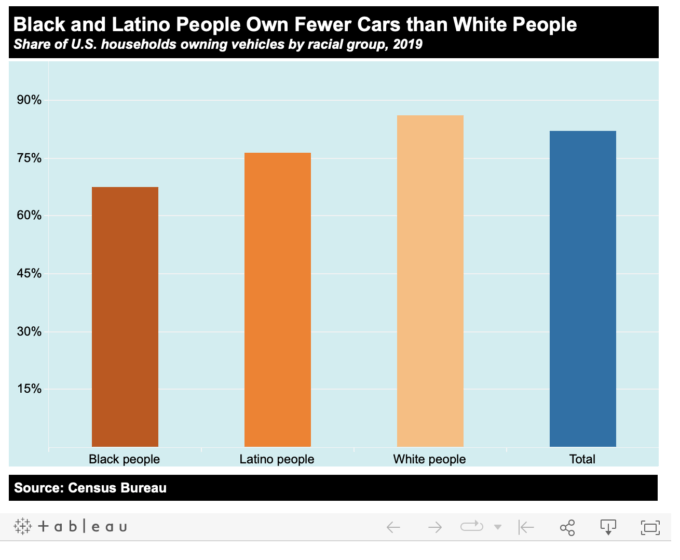Basav Sen
For decades, the federal government has allocated about four times as much funding to roadways as it has to public transit such as buses and subways.
This policy choice has consequences for racial and economic justice, the environment, and more. Here, we focus only on the racial and economic justice questions – whose interests are not served, and who are excluded, by the policy choice to prioritize an ever-expanding roadway system over public transit?
When the federal government pours money into highways and starves public transit of resources, an inevitable consequence is that the road network keeps expanding, and public transit systems face resource constraints that impact their operation.
Between 1990 and 2020, the extent of roadways in the U.S. measured in lane miles grew by 9 percent. (One lane of roadway over a one-mile length is one lane mile. Thus, a 10-mile length of a four-lane roadway is 40 lane miles, and a 20-mile length of a two-lane roadway is also 40 lane-miles.)
However, what this overall number masks is the dramatic growth of urban roadways. Even as the overall extent of rural roadways shrank by almost 6 percent over this period, urban roadways overall expanded by almost 67 percent, and urban interstate highways in particular expanded by almost 73 percent. Federal transportation funding has subsidized urban sprawl.

Meanwhile, public transportation systems have an accumulated maintenance and repairs backlog that is estimated by different sources as between $90 billion and $176 billion. The $39 billion in new transit funding provided by recent federal infrastructure legislation is less than half of the lower estimate of this maintenance backlog (and less than a quarter of the higher estimate).
When transit systems are poorly maintained, the frequency and reliability of service suffers, making transit a less viable form of personal transportation. Faced with unreliable (and for as many as 45 percent of people in the U.S., non-existent) transit systems, people often have no choice but to drive a personal vehicle to get to work, medical appointments, the grocery store, or anywhere else. Who does this impact?
Who Are the Carless?
Obviously, in a society where ownership of a personal vehicle is essential for basic personal mobility, those without a vehicle (about 18 percent of all U.S. households) are excluded. But the degree of exclusion can be far worse for some people.
Personal vehicle ownership rates by households are distinctly lower for people of color than for white people, as seen from U.S. Census Bureau data. Barely more than two-thirds of Black households own vehicles, compared to about 82 percent of all households and 86 percent of white households.

The same data show even more striking disparities in vehicle ownership by household income, with only 61 percent of households in the lowest income quintile owning a vehicle, compared to 90 percent of households in the highest income quintile. (A quintile is one-fifth of a distribution. If all household incomes in the U.S. were arranged in order from the lowest to the highest, the lowest one-fifth of household incomes would be called the lowest income quintile, the next one-fifth would be called the second quintile, and so on.)

A transportation system that assumes universal private vehicle ownership denies basic mobility to two out of five of the poorest one-fifth of U.S. families.




No comments:
Post a Comment